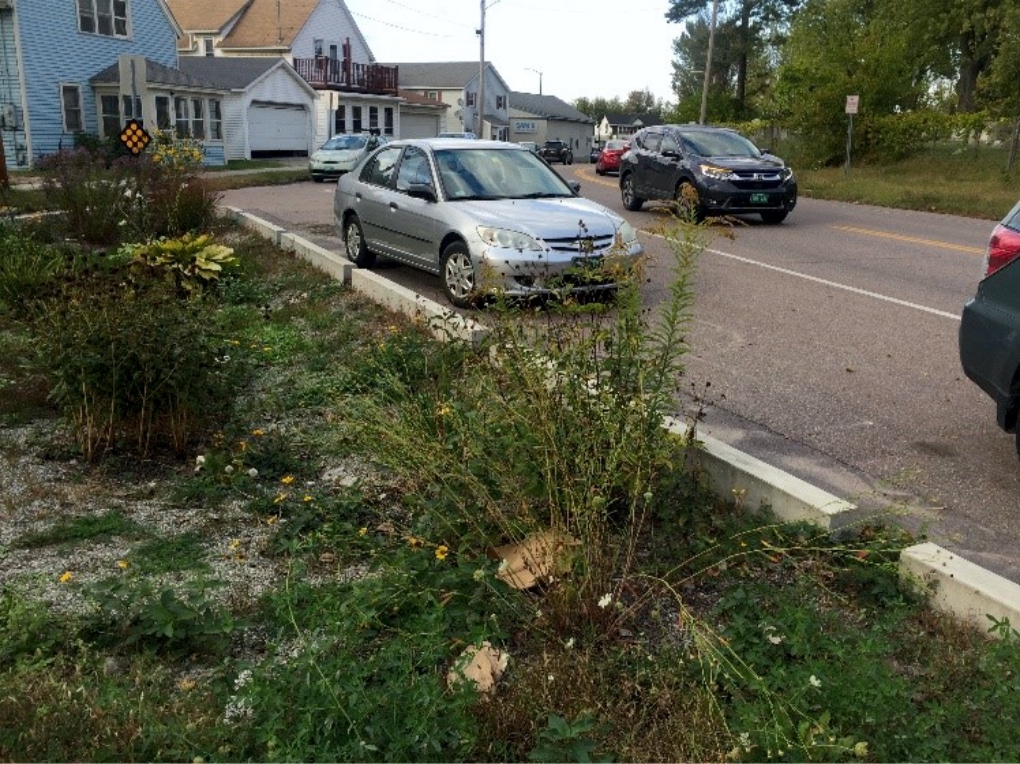To celebrate St. Patrick’s Day this year, we wanted to highlight some the ways we embrace green infrastructure. Sometimes our projects are naturally geared towards sustainability out of necessity (i.e. so we don’t disturb wildlife or certain plant species), while other projects may not have a need for sustainability but we see a way to incorporate it (i.e. better stormwater management).
Before we get into some of the specific green infrastructure examples, it is important to establish some background. First, green infrastructure is not just a marketing term; it is defined by the US Environmental Protection Agency (EPA) as “the range of measures that use plant or soil systems, permeable pavement or other permeable surfaces or substrates, stormwater harvest and reuse, or landscaping to store, infiltrate, or evapotranspirate stormwater and reduce flows to sewer systems or to surface waters.”
In other words, green infrastructure is using natural means to move water rather than building more infrastructure like pipes or drains. These projects are highlights of our recent green stormwater infrastructure.
Green Methodology
As part of a consultant team, we have developed a methodology for the Vermont Department of Environmental Conservation (VTDEC) to prepare cost estimates for the implementation, and operation and maintenance of stormwater projects for all land use sectors (agricultural, wetlands, river/streams, lakeshore, forest roads/trails, roads, urban, etc.), as well as developed an O&M standards manual for continued operation of these practices. The final product was recently submitted to the State of Vermont and will outline how stormwater projects are planned, implemented and maintained throughout the State.
Green Bioretention

One project I worked on was to conduct an Engineering Feasibility Analysis for the City of South Burlington Municipal Office complex which had been identified as a location to evaluate and implement stormwater management improvements. The analysis resulted in the implementation of Low Impact Development (LID) measures. The designed stormwater management improvements included a bioretention facility, vegetated swale, and underground storage system.
The bioretention facility works to collect and absorb runoff from rooftops, sidewalks, and paved surfaces. Bioretention practices mimic natural hydrology by infiltrating and evaporating and transpiring stormwater runoff.
Green Gravel Wetlands

This project addressed collected stormwater flowing into Bartlett Brook, crossing beneath Route 7 and ultimately into Shelburne Bay in Vermont. The design concept that had been developed by others through the Bartlett Brook Flow Restoration Plan process included capturing collected stormwater runoff from the neighborhood and conveying this stormwater to a City-owned parcel on the west and downgradient side of the neighborhood to allow for underground infiltration. Upon further investigation, site soil conditions were found to be unfavorable for stormwater infiltration. As a result, the Hoyle, Tanner Team designed a gravel wetland at the City-owned site to provide for flow detention and phosphorus removal of the collected stormwater runoff from the contributing residential drainage area.
Green Plans

Finally, but not least in importance, is planning for green infrastructure’s future. As part of a large integrated water quality planning effort for the City of Burlington, green stormwater infrastructure (GSI) projects were included as an important means to reduce stormwater flows and phosphorus loading to the combined sewer system in Burlington.
As part of meeting requirements for different Clean Water Act programs, Burlington’s Integrated Plan is intended to identify and prioritize water quality opportunities that result in a cost-effective program to achieve water quality goals. Tasks included the development of a comprehensive clean water alternatives analysis, including identification of enhanced phosphorus optimization at wastewater treatment facilities; identification of City-wide runoff (stormwater and wet-weather) opportunities; planning concepts for high-priority runoff mitigation projects; financial capability analysis; facilitation of public outreach; and development of an Integrated Plan with an implementation schedule. Burlington’s Integrated Plan development is currently in progress with an anticipated submission to State regulators later this year.
Stormwater runoff is a major cause of water pollution in urban areas, carrying trash, bacteria, phosphorus, and other pollutants from the urban landscape into our waterways. Implementation of green infrastructure can help mitigate stormwater runoff by providing natural areas within the urban landscape that provide habitat, flood protection, and cleaner water. At Hoyle, Tanner, we look for ways to incorporate green infrastructure into our planning and design concepts to maximize the environmental benefits they can provide.









